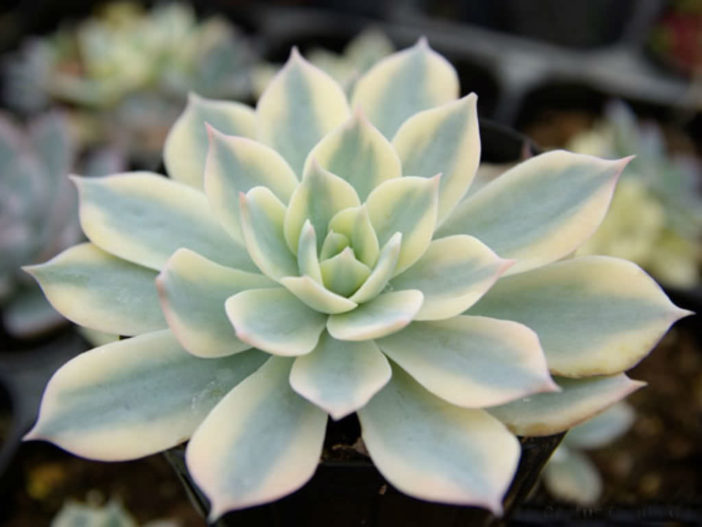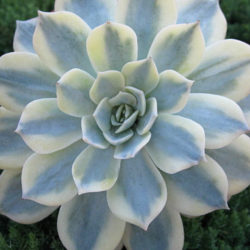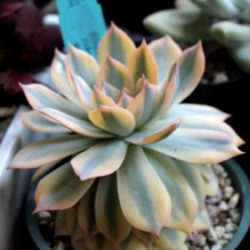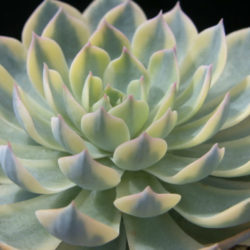Scientific Name
Echeveria desmetiana 'Variegata'
Synonym(s)
Echeveria peacockii 'Variegata', Echeveria subsessilis 'Variegata'
Scientific Classification
Family: Crassulaceae
Subfamily: Sempervivoideae
Tribe: Sedeae
Genus: Echeveria
Description
Echeveria desmetiana 'Variegata', also known as Echeveria peacockii 'Variegata' or Echeveria subsessilis 'Variegata', is an attractive succulent that forms stemless rosettes of silver-blue leaves with creamy-yellow variegation on each edge. The rosettes grow up to 4.4 inches (11 cm) in diameter. Leaves are spoon-shaped with a short pointed tip, up to 2 inches (5 cm) long, and 1 inch (2.5 cm) wide. They take on beautiful red hues when exposed to bright sunlight.
Origin
Echeveria desmetiana 'Variegata' is a cultivar of Echeveria desmetiana with a variegated foliage.

Hardiness
USDA hardiness zones 9b to 11b: from 25 °F (−3.9 °C) to 50 °F (+10 °C).
How to Grow and Care
Most common Echeveria species are not complicated succulents to grow, provided you follow a few basic rules. First, be careful never to let water sit in the rosette as it can cause rot or fungal diseases that will kill the plant. Additionally, remove dead leaves from the bottom of the plant as it grows. These dead leaves provide a haven for pests, and Echeverias are susceptible to mealy bugs. Finally, as with all succulents, careful watering habits and plenty of light will help ensure success.
Repot as needed, preferably during the warm season. To repot a succulent, ensure the soil is dry before repotting, then gently remove the pot. Knock away the old soil from the roots, removing any rotted or dead roots. Treat any cuts with a fungicide.
Most Echeverias can be easily propagated from leaf cuttings, although a few are better from seeds or stem cuttings. To propagate a leaf cutting, place the individual leaf in potting soil for succulents and cover the dish until the new plant sprouts.
Learn more at How to Grow and Care for Echeveria.
Links
- Back to genus Echeveria
- Succupedia: Browse succulents by Scientific Name, Common Name, Genus, Family, USDA Hardiness Zone, Origin, or cacti by Genus
Photo Gallery
Click on a photo to see a larger version.


